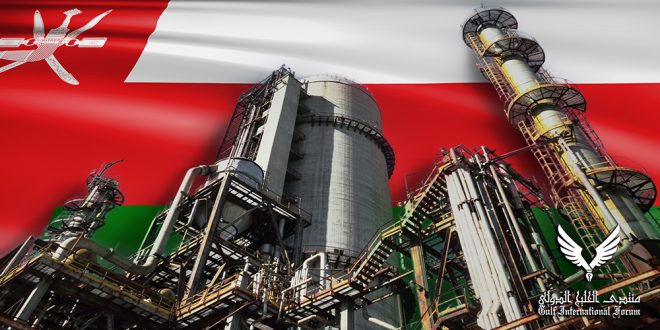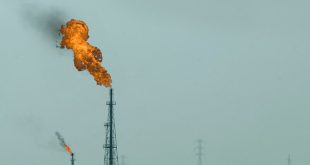The Russian invasion of Ukraine has given Oman’s natural gas industry, long handicapped by relatively modest reserves and high extraction costs, a new lease on life.
The global energy crisis caused by Russia’s invasion of Ukraine one year ago has underlined the centrality of LNG to Europe’s energy security. Since then, competition for natural gas has intensified; major LNG producers like Qatar, the United States, and Australia have all formulated production expansion plans. Among these established players, a fledgling LNG exporter has entered the global gas market: Oman. The Sultanate’s reserves are relatively modest, clocking in at 24 trillion billion cubic meters according to local sources. Discovered in 2000, the offshore gas field at Khazzan with a reserve of 10.5 trillion cubic feet of recovered gas generated significant hope within the country that it could become a major exporter of natural gas. However, the reservoir’s formation and the need for advanced extraction technologies to access the gas have dampened this enthusiasm. Indeed, despite the field’s vast reserves, Oman cannot produce gas at a price or volume of other major LNG suppliers.
As Oman shifts towards renewable energy production, it is seeking diversified allocation for its feedstock. This will gradually reduce the country’s dependence on gas, freeing up its domestic supplies for export to the global market. Alongside producers’ commitment to decarbonization, such reductions in gas consumption will also allow resources to be channeled into LNG. This move is expected to gain momentum after 2023, as Oman’s renewable output increases.
Oman’s Gas Development
It should be noted that even within recent years, the future of LNG in Oman has been uncertain. Output in the country has steadily fallen, even as demand continues to increase. However, following the Russian invasion of Ukraine in February 2022, the country’s LNG prospects have improved considerably. After Russian forces crossed into Ukrainian territory on February 24, the United States and its European allies imposed heavy sanctions on Moscow, slashing hydrocarbon imports from Russia in the process. Thus, several European states have turned to Gulf and African countries for an alternative to Russian natural gas. Last May, the Czech Republic began negotiations to secure LNG shipments from Oman. The Oman News Agency announced that the country’s annual production of liquefied natural gas (LNG) had increased by 4 percent in 2022 to a record of 10.6 million tons, which would increase to 11 million tons by the end of the year. Last year, the LNG industry provided about $2.87 billion in revenue to the Sultanate. Oman’s LNG production is expected to increase further as state-backed joint venture Oman LNG announced plans to increase capacity to 11.4 million tons per year by 2023 by reducing bottlenecks at its liquefaction plant south of Muscat.
The new plant, Block 61, targets 10.5 trillion cubic feet of gas resources and 400 million barrels of condensate. The block itself is actually made up of two separate, concurrent projects—the phase 1 Khazzan and Makarem project, launched in 2017, and the phase 2 Ghazeer project, which was initiated in 2020. The government planned for the Ghazeer phase to add an extra 410 million cubic feet per day of production volume by 2022, bringing the refinery’s total capacity to 1.5 billion cubic feet per day of gas. Gas from Block 61 could meet 35% of Oman’s domestic demands, while also adding to the nation’s LNG export supply. At the start of February 2021, BP negotiated a $2.6 billion deal to sell a 20 percent share of its interest in Oman’s Block 61 to PTT Exploration and Production Public Company Limited (PTTEP) of Thailand. The deal saw payments of $140 million for pre-agreed conditions and a larger payment of $2.45 billion upon completion. According to BP, natural gas from Block 61 is distributed for domestic consumption through Oman’s national gas grid, for use as fuel for power plants and feedstock for industry.
According to Oman-based Shabiba online newspaper, figures from the Organization of Arab Petroleum Exporting Countries (OAPEC) projected record LNG exports of over 11 million tons by the end of 2022. By the end of the third quarter, the country had already seen a 3 percent year-on-year increase in exports, hitting 8.4 million tons. According to Shabiba, the yearly growth rate—estimated at 9 percent for 2022—is the second highest growth rate among countries in the region.
Short-Term Gains, Long-Term Flexibility
Much of the gas industry’s growth derives from increased commercial agreements with Asian states, which have been less affected by geopolitical events in eastern Europe. In December 2022, Oman agreed to supply Japanese trading houses Mitsui & Co. and Itochu Corp., as well as electricity firm Jera Co, with 2.35 million tons of LNG per year. At the same time, oil and gas exporter Inpex Corp. announced a one million ton per year agreement with the United States, set to last 20 years. China’s UNIPEC signed the country’s first agreement for Omani LNG—a four-year LNG deal amounting to 1 million tons in total. Omani exports to China are set to begin in 2025.
European countries whose energy security has been imperiled by Russia’s invasion of Ukraine have also turned to Oman. Earlier this year, Oman signed a ten-year deal with France’s Total Energies that will see total import of 800,000 tons of Omani LNG per year starting in 2025. Seeking to break its dependency on Russian gas imports, Germany has entered discussions with Oman for a similar 10-year deal. Oman’s long-term view on gas commercialization can be seen from its investments; the state is currently constructing a liquefaction plant in Duqm, in partnership with Shell. The plant will convert natural gas to diesel, gasoline, and jet fuel and will be the third such plant in the region.
Other LNG trading partners are closer to home; Turkey is one of the new customers of Omani LNG. At the end of January 2023, Ankara signed a ground-breaking, 10-year agreement with Oman. Turkish Minister of Energy Fatih Donmuz announced that a delegation from state energy company BOTAS had traveled to Muscat to pen the deal, which will see 10 million tons of LNG exported from Oman to Turkish terminals for four years.
Oman’s oil and gas reserves have been a key source of income for the country of 4.5 million people, but with a steadily growing population, the expansion of renewable energy, and the general drop in oil prices between 2014 and 2022, oil revenues can no longer meet the needs of the Sultanate. The need for economic diversification was only made more apparent by the COVID-19 pandemic, which led to plummeting oil prices and popular dissatisfaction toward Oman’s economic situation. The country’s new emphasis on the development of ports and special and free economic zones, creates a unique opportunity for the development of energy infrastructure. Natural gas is no exception. By investing in LNG terminals, Muscat can expand its international trade and balance government expenditures in the long term.
The convergence of geopolitical events and economic diversification policies lends to a greater role for Oman in the energy security of East Asia and Europe. Considering Oman’s short-term contracts for the sale of LNG and the desire of countries such as Germany, Japan, and Turkey, there does not seem to be a serious challenge for Oman’s LNG exports in the short term. However, in the long term, as demand for green energy supplants the need for hydrocarbons declines, Oman must continue to adapt to the new dynamics of the global energy market.





